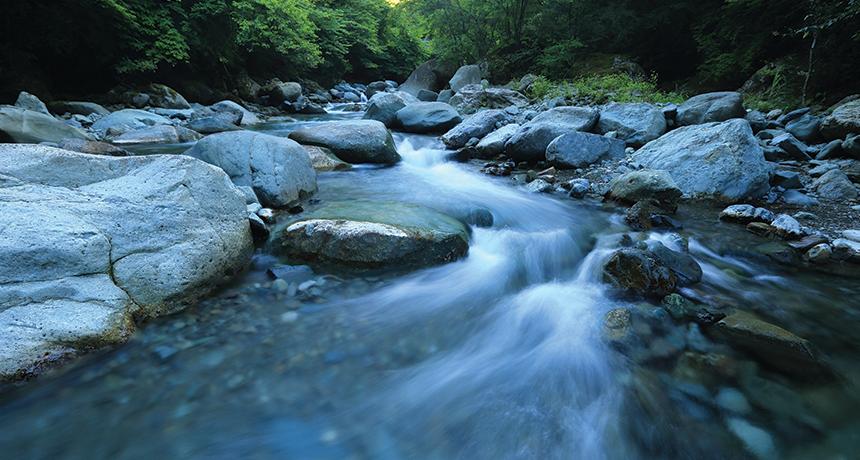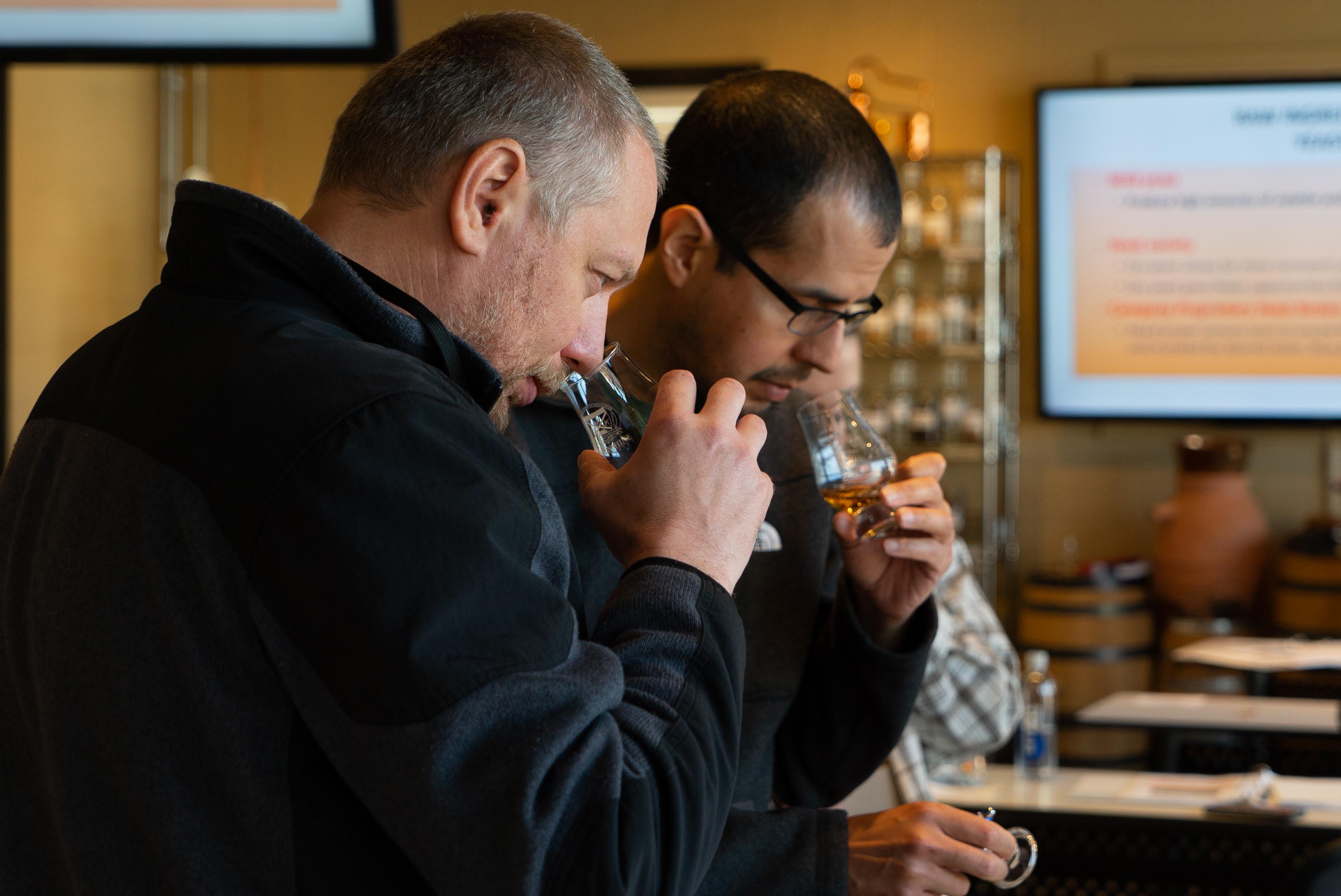
The Art of Non-Alcoholic Spirits
blog
For decades, spirits and cocktails have fostered a culture of craft, connection, and celebration. But over time, cocktail culture has evolved far beyond the buzz!

Written by Cliff Jacobson, CEO, Spray Chem; Business & Engineering, Burnt Barn Distilling Co.
We carefully consider our mash bill and our processes hoping to create a unique and outstanding product-yet few of us take the time to think about the steam we're injecting into our kettle. It's just steam, right? What else is there to say about it?
Well, plenty. Proper boiler water treatment will extend the life of your boiler and improve the quality of the steam it produces. Because your water has a direct impact on the success of your processes and the life of your equipment, you'll want to assess the quality of your water. To do this, you should consider two factors: the first is your water source itself and the second is how water is treated before it cycles through your equipment.
When it comes to boiler water, things can get complicated quickly, so let's start with the basics; of course, if you feel prepared to explore boiler care in a bit more depth, then return May 19 for an advanced look at 6 Questions for Proper Distillery Boiler Maintenance.
Understanding the water that comes into your facility is critical. Generally, there are two types of water: (1) surface water, which comes from rivers or lakes; and (2) subsurface or ground water, which comes from wells.
The source of surface water is mostly from rainfall, which is essentially pure with few dissolved solids; however, the composition may differ based on how the water is stored and transported to the end user. One important characteristic of rainwater is pH.
A pH measurement of 7 is considered neutral. Carbon dioxide is dissolved into rainwater as it passes through the atmosphere, giving the rainwater a pH of about 5.6. This is considered corrosive and could have a negative effect on your equipment.
Fortunately, most surface water flows through soil and rock prior to being drawn into a reservoir or treatment facility, allowing it to be naturally adjusted as it comes into contact with minerals and organic matter. Most municipal water is also treated to adjust it to acceptable standards prior to reaching the consumer, a process which likely includes the addition of corrosion inhibitors and chlorine.
Subsurface or ground water has a longer contact time with organic material, soil, and rock; therefore, it tends to contain more dissolved material. It's also much higher in minerals-such as calcium, magnesium, iron, and silica-that build up in equipment.
Of course, the chemistry of water is more complex than stated here; but this information should help you understand the importance of using good quality water to feed the boiler in your distillery operation. That brings us to the next consideration-water treatment.

Regardless of where your water comes from, it will need to be treated to ensure the success of your processes and longevity of your equipment. Two ways to treat the water in your facility include filtering and softening.
Filtering removes suspended solids and chlorine, each of which can cause corrosion or fouling of your equipment. Meanwhile, softening exchanges scale-forming minerals-like calcium and magnesium-with sodium.
If high silica or iron levels are present in your water, then additional treatments such as oxidation and filtration or reverse osmosis may be needed before sending makeup water to your boiler-but that's a topic for another blog. For now, we're just going to focus on the nuances of water softeners.
As the water in your boiler is heated, calcium and magnesium will not stay in solution, so they adhere to the hot surface of the boiler and begin to build up until they form dense scales. Ionic exchange is the process of removing the scale-forming minerals found in most water. This is where water softeners come in.
Hardness ions (such as calcium, iron, and magnesium) are deposited on a media bed consisting of little beads, called zeolite. The zeolite bed has sodium ions attached to it, each of which are released and exchanged for calcium, iron, or magnesium on a one-for-one basis.
Where does all this sodium come from? It is nothing more than extra-coarse table salt (sodium chloride) that is deposited onto the zeolite surface of the media during the softener's regeneration process. When the softener is regenerated, it is bombarded with sodium until all the hardness minerals have been released. The tank is then rinsed of all excessive sodium and the remaining sodium-now attached to the zeolite media-is ready to exchange again.
Sodium ions don't precipitate onto the boiler surface because they are more soluble in hot water; instead, they travel harmlessly along with the water. Meanwhile, the hardness ions that have been trapped on the zeolite bed will eventually be discharged into the drain during the regeneration cycle.
It's important to note that while zeolite beds have the capability of absorbing some iron, iron levels above ½ to 1 ppm will eventually foul the bed. In this case, a separate treatment for iron removal would be recommended prior to softening.
Water softeners are usually sized according to their volume of zeolite in the tank, stated in cubic feet. To adequately size your softener, you'll need the following information:
Let's go through an example together, assuming the average flow rate is 10 GPM, the total hardness in PPM is 200, and the hours per day of operation is 10:
10 GPM (gallons per minute) X 60 (minutes per hour) = 600 GPH (gallons per hour) X 10 hours = 6,000 GPD (gallons per day)
To determine the grains required per day, convert ppm to GPG:
200ppm / 17.1 = 11.7 grains of hardness (rounded)
6,000 GPD x 11.7 = 70,200 total grains
The average salt used to regenerate one cubic foot of zeolite resin is 12lbs. After the softener regenerates and the tank is rinsed, there are about 25,000 grains of sodium attached to the zeolite bed per cubic foot.
70,200 total grains needed / 25,000 grains per cubic foot = 2.8 cubic feet per day.
So, to ensure enough softened water for a 10-hour day, you'd be well served by a 3-cubic-foot water softener.
Here's another handy hint: If your softener is 2-cubic-feet per tank and takes 12lbs of salt per cubic foot to regenerate, then you know you should be using 24 lbs of salt per regeneration. If you find that you are putting more salt in the brine tank than what should be consumed, it's a good indication that your softener needs attention:
High cycles of iron in the boiler are often caused by excessive brine (chlorides) dumped into the boiler water makeup from a poorly performing softener and can lead to corrosion in the boiler and condensate return.
Another consideration is the softener's capacity for maximum flow. If you're sizing the softener for just the boiler, you only need to calculate its feed rate of makeup water; however, you will likely want soft water for other uses around the facility. To meet those needs, some facilities choose a twin-alternating system.
For example, instead of purchasing a 4-cubic-foot system, you may want to consider a 2-cubic-foot twin. As long as the smaller softener will satisfy your total GPM required, you would be smarter to invest in the twin. A twin can regenerate multiple times per day which means that you will never run out of soft water. It also means that your softener won't need to be regenerated each day to ensure enough capacity to make it through the following day.
If this still sounds too complicated to figure out on your own-no worries. Let the experts at Spray Chem help. Contact our team at contact@spraychem.com or (530) 895-3658.
Interested in advancing your knowledge of distilling and the spirits industry? Check out Moonshine University's upcoming courses to learn from the best in the business.
Written by Cliff Jacobson, CEO, Spray Chem; Business & Engineering, Burnt Barn Distilling Co.
Related Content
Finishing Your Spirit With Filtration: Plate & Frame Filter Press Or Lenticular Housing?

blog
For decades, spirits and cocktails have fostered a culture of craft, connection, and celebration. But over time, cocktail culture has evolved far beyond the buzz!

blog
Those that are familiar with the process of crafting distilled spirits may also be familiar with the 10 common congeners that are created during fermentation, and honed during the distillation run. Each congener has its own distinct personality, rendering unique tastes and aromas to the finished spirit.

blog
So, you want to start distilling with freshly milled grain. Maybe you're tired of paying top dollar for the pre-milled stuff from the malt distributor, and you're ready to invest in the quality, efficiency, and bulk pricing that comes with milling your own whole grain. But where do you start?